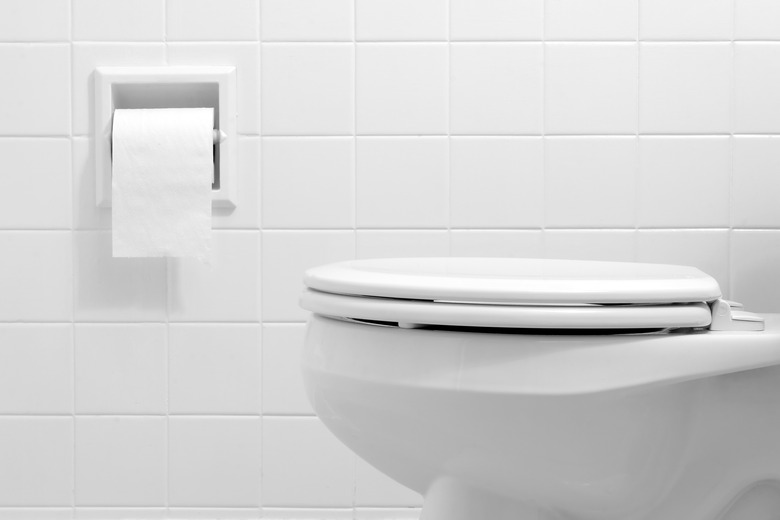How To Fix A Toilet Overflow Problem
We may receive a commission on purchases made from links.
If your toilet has overflowed into your bathroom, you are likely panicking at least a little bit. When the water reaches the point where it spills over the bowl and onto your bathroom floor, it's time to act quickly to prevent any further mess or water damage. Fortunately, toilet spills are usually caused by a few fairly straightforward issues, so troubleshooting the problem may be simpler than you expect.
Turn Off the Water
Turn Off the Water
Before doing anything else, turn off the water supply to stop the immediate overflow. On most toilets, you can find the water supply line on the bottom side of the bowl. Look for a valve or a knob and turn it until the water stops running.
If the water continues to run, turn off the main water supply to the house. Typically, it can be found near the water meter. If you're in an apartment, the valve for your unit may be located under a sink.
Next, to avoid any splashing or making a further mess, remove excess water from the toilet with a bucket. You can pour it back down the toilet once it is up and running again or dump it outdoors.
Fixing a Clogged Drain
Fixing a Clogged Drain
Most often, the overflow of a toilet is caused by a clogged drain. For issues like this, the solution is simple, and in most cases, nothing will need to be replaced. Wear a pair of gloves to prevent germ transfer and wipe down the surrounding floor to avoid slip-and-fall hazards.
Align a plunger with the hole in the toilet bowl and apply downward pressure. Start slowly; then speed up as you go, creating pressure in the drain that should dislodge clogs. If you are successful, the water should drain from the bowl when you remove the plunger.
Sometimes, the clog is caught in the trap too far down for a plunger to reach. If you've tried using a plunger to no avail, this may be why. Use a toilet auger to reach deeper into the drain and break apart the obstruction. Then try the plunger again.
Frequent Overflow Issues
Frequent Overflow Issues
If the obstruction was successfully dislodged by using a plunger or toilet auger, check the float mechanism in the tank. Make sure the chain is attached and not caught on anything so the toilet can flush; then set it to sit lower to prevent the tank from overflowing in the future.
Usually, if toilet overflow problems are caused by anything other than a clogged toilet drain, there will be other signs throughout the house. Sometimes, the pipes that run to the main sewer line can become clogged, or tree root systems around the home can dislodge or block pipes. When this happens, water will likely collect elsewhere, like in the basement.
Septic Tank Issues
Septic Tank Issues
The septic tank may also be the culprit. Septic tanks slowly release wastewater into the drain field after it has had time to settle in the underground tank. The drain field is a covered excavation where wastewater filters into the soil.
If the septic tank is not maintained, the drain field will overflow and flood. With nowhere for the water to go, the same may eventually happen to your toilet. If this happens, the area surrounding the septic tank will be saturated with wastewater, and you will likely notice a smell. For issues like these, call a professional as repairs can be complicated and time-consuming.
Other Overflow Problems
Other Overflow Problems
If none of the above outlined issues are the source of your toilet overflow, check to see if you have a low-flow toilet. Popular for conserving water, low-flow toilets are sometimes not able to break waste down as efficiently as other toilets.
Don't flush feminine products, diapers or any paper products that are not toilet paper. Avoid flushing even floss or hair, as these can build into a bigger problem if they get stuck.
Overflow may also be the result of too much water in the tank of the toilet, rather than the bowl. If this is the case, it is because the water filling won't shut off when it should. This is likely due to a problem with the float or chain, so be sure they are intact and connected. Over time, they tend to break, especially as a result of water damage.
